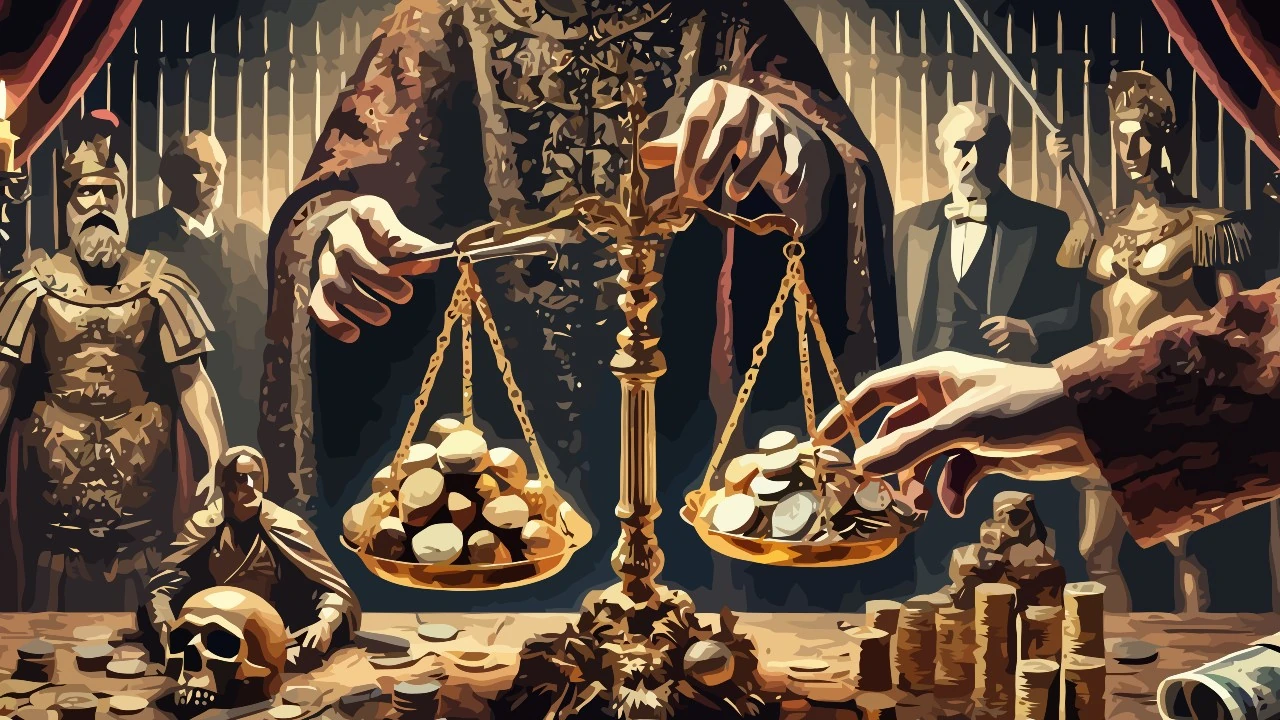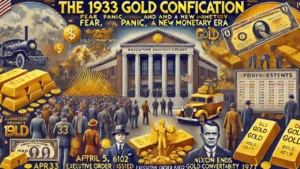Gold and silver have always been fundamental pillars of global economic systems, symbols of wealth and stability. However, their importance has made them targets of financial manipulation since ancient times.
Throughout the centuries, bankers, governments and financial institutions have attempted to influence prices for illicit profits or strategic advantages. In this article, we will explore the main documented cases of gold and silver price manipulation, analyzing the perpetrators, the dynamics of the frauds and the legal consequences associated with each event.
Contents
#1. Fraud in antiquity and Middle Ages
Already in Roman times, Emperor Nero was accused of reducing the silver content of coins to cover war expenses, starting a practice that spread throughout the Empire. As coins gradually devalued, public confidence declined, generating economic instability. During the Middle Ages, numerous rulers followed similar practices:
- Edward I of England reduced the silver content of his coins to finance his military campaigns in Scotland and France. This choice generated inflation and discontent among merchants and the poorer classes, who saw the purchasing power of the coins reduced. To contain the protests, the king imposed severe laws against counterfeiters, but the economic consequences remained devastating.
- Philip IV of France, known as “Philip the Fair,” lowered the precious metal content of French coins to finance his wars against England and the Crusades. The devaluation led to popular protests and the deterioration of the French economy. Philip was also involved in the persecution of the Templars, who were accused of accumulating wealth that the king wanted to control.
- Frederick II of Swabia was accused of using less valuable metals in the coins issued in the imperial territories. This weakened the imperial currency and increased tensions with the merchants of the Holy Roman Empire. The resulting crisis favored the rise of the Italian city-states as autonomous financial centers.
The consequences of these manipulations were dramatic: devaluation of the currency, increase in prices and loss of confidence in the authorities. Counterfeiters were prosecuted with severe penalties, while sovereigns rarely suffered sanctions, despite the devastating effects on local economies. In some cases, popular revolts forced monarchs to restore the original content of the coins.
#2. Gold standards and consequences
With the introduction of the Gold Standard in the 19th century, manipulations shifted from physical coins to monetary policies. Central banks and governments adopted strategies to influence markets:
- United Kingdom (1925): The return to the Gold Standard at a rate overvalued compared to the real value of gold caused deflation and economic crises. This favored speculators and damaged the British economy. The situation deteriorated to the point that the government was forced to abandon the system in 1931.
- United States (1933): Franklin D. Roosevelt banned private gold holdings and raised the official price of gold from 20.67 to 35 USD per ounce. This move increased Federal Reserve reserves but raised criticism for forcibly expropriating citizens. Some opponents filed lawsuits, but they were rejected by the Supreme Court.
- End of the Gold Standard (1971): President Nixon declared the end of the convertibility of the dollar into gold, freeing markets from the restrictions of the gold standard. This event opened the way to large-scale speculation and increased the volatility of financial markets.
The legal consequences of these decisions were minimal for the governments involved, but investors and savers suffered heavy losses during the transitions. However, the end of the Gold Standard marked the beginning of a new era of manipulation through more complex financial instruments.
#3. Manipulation in the 20th century
The 20th century saw some of the most dramatic manipulations of the gold and silver markets:
- London Gold Pool (1961-1968): Eight central banks attempted to maintain the price of gold at $35 per ounce. Increased demand and speculative pressures led to the collapse of the cartel. No sanctions were applied to the banks involved, but the episode marked the end of direct control over the gold market. The collapse of the London Gold Pool highlighted the inability of governments to maintain stable prices in a globalized market.
- Silver Crisis (1980): The Hunt brothers attempted to corner the market by purchasing huge quantities of silver. The price rose from $6 to nearly $50 an ounce. The bubble burst when the Commodity Futures Trading Commission (CFTC) imposed new margin rules, causing prices to plummet. The Hunt brothers were fined more than $134 million and declared bankrupt. Their failure caused a wave of panic in the commodity markets and prompted authorities to tighten regulation of futures.
These events demonstrated how late regulation can exacerbate financial crises and jeopardize market stability. Sanctions applied later were deemed insufficient to deter future manipulation.
#4. The great scandals of the 21st century
The 21st century has seen the emergence of more sophisticated manipulations and more severe sanctions:
- London Gold Fix (2014): Deutsche Bank, HSBC and Scotiabank were accused of manipulating gold prices through illegal deals. Deutsche Bank paid a $60 million fine and agreed to cooperate with investigations against other banks involved. The investigation revealed that traders exchanged confidential information to influence the daily price of gold.
- JPMorgan Chase Spoofing (2020): The bank was fined more than $920 million for using fictitious orders to influence gold and silver prices. The investigation revealed that the traders involved had been manipulating the market for years, deceiving investors with spoofing strategies. JPMorgan tightened internal controls and some traders were sentenced to prison terms.
These scandals have shown the effectiveness of new manipulation techniques and the need for harsher sanctions to deter fraudulent behavior in financial markets. However, despite the high fines, many critics argue that sanctions are still not enough to completely eliminate illicit practices.









Leave a Reply